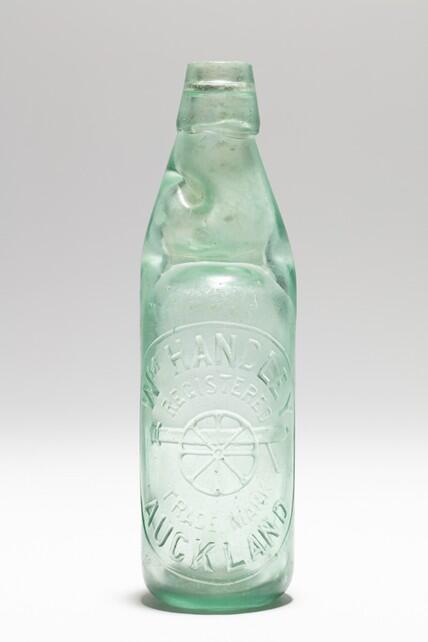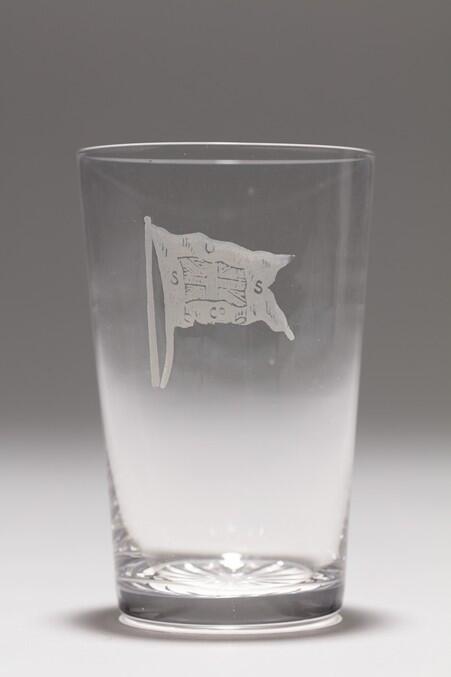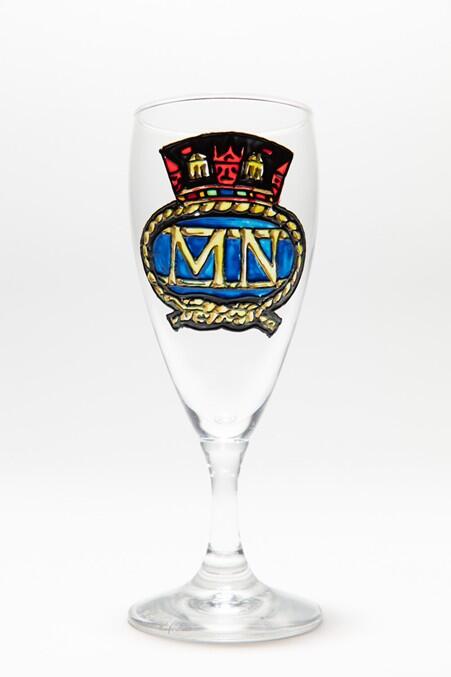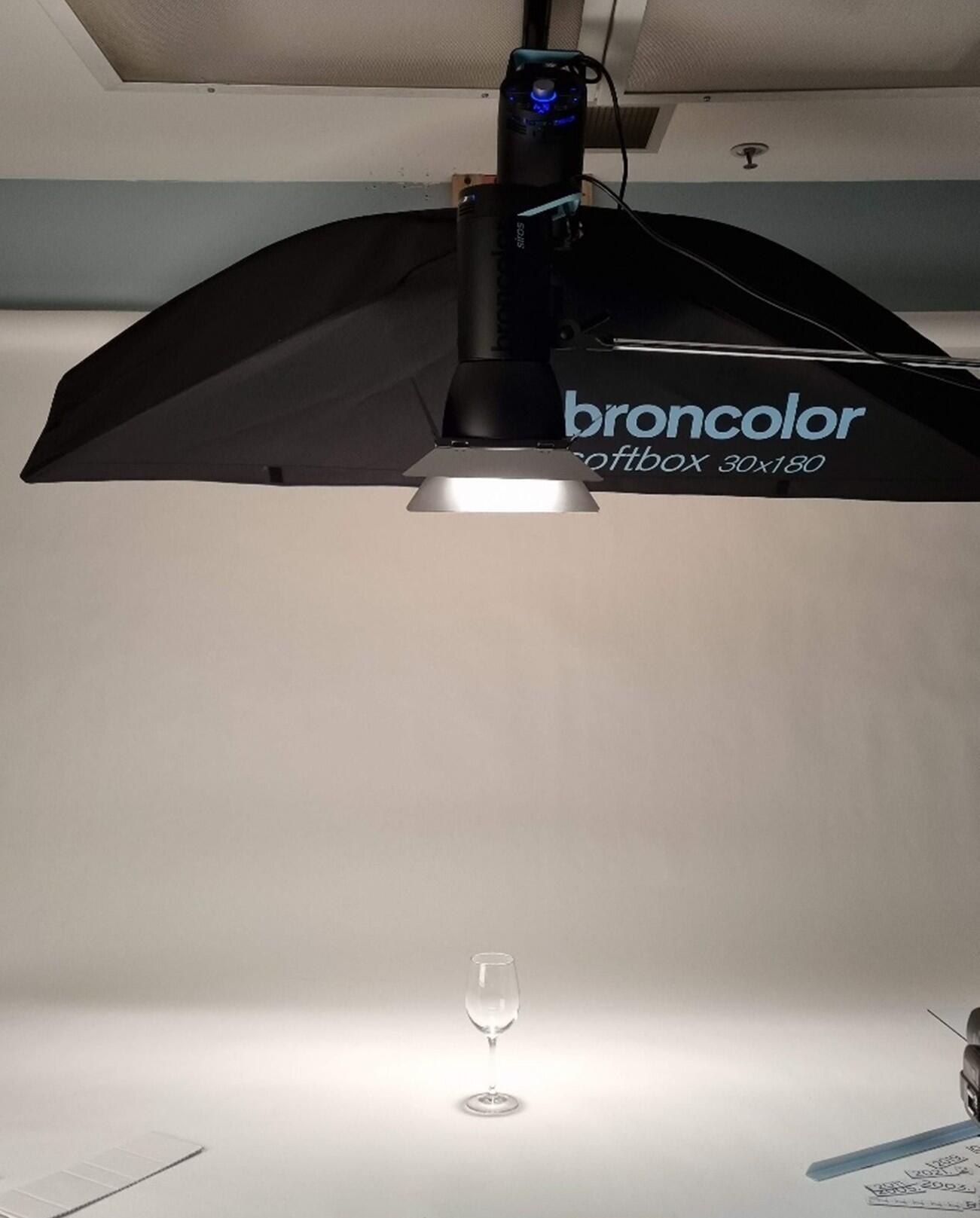By Andrew Hales, Lead Photographer, New Zealand Maritime Museum
Produced by New Zealand Maritime Museum 2025
Object Type or Collection: Clear Glass objects, wine glasses, water glasses, glass bottles etc
Number of Lights: 2
Lenses Used: 100 Macro and 24-70L
Basic Summary
Clear glass will show the background colour or luminance through its surface, so it requires a contrasting background for any details to be visible.
If the glass is textured or etched, the background needs to be grey tone, how dark or light being dependent on the amount of detail.
The glass is best lit from above with a single light source that can be flagged to control spill onto the background.
A separate light is used to light the background.
The Corning Museum of Glass has a great blog series detailing how they photograph glass objects:
https://blog.cmog.org/tag/photography
Example Image



Images of set up with notes

The main light is a Broncolor Siros 800 with Barndoors positioned directly over the object. The barn doors are arranged to direct light down and forward onto the subject while blocking light falling onto the background. A tight gridded reflector could also work.
The background light is a Broncolor Siros 800 with a strip box, angled high to stop spill onto and around the subject.
Main light metered to F8 and images are shot at 1 to 2/3 higher power depending on density and clarity of glass.
2nd light adjusted in power to provide light on the background for an appealing and balanced image while still retaining visible contrast in any patterns, etching or other marks on the glass. Dark coloured glass could be photographed with the background blown to white.
Note that this set up only works on translucent glass subjects.